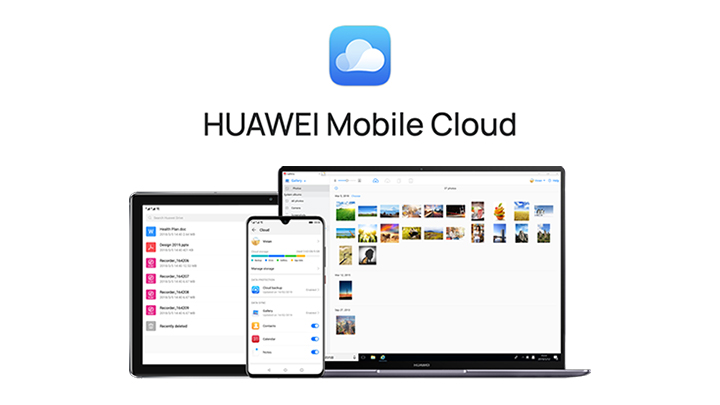Whenever we encounter the Huawei brand, the first thing that usually comes to mind is its mobile devices and networking technology. But there’s something else that is worth looking at that plays an important role when it comes to user experience, the Huawei Mobile Services (HMS), and the Huawei Ecosystem.

The Huawei Ecosystem involves different kinds of consumer devices like smartphones, tablets, wearables, speakers, telematics, IoT devices, and apps and services. These things work together with the help of Huawei’s other services like Huawei Share and Huawei HiLink. That’s why you can easily transfer files between Huawei devices or control Smart Home devices through your Huawei smartphone. The exciting part is that the ecosystem continues to grow.

Huawei uses the ‘1+8+N’ strategy when it comes to the ecosystem, which means the smartphone serves as the One (1) center, and Huawei’s Ecosystem partners connect across Eight (8) supporting devices to create a fully-connected IoT environment consisting of Endless (N) services. The HMS handles the coordination and management center between the devices and apps.
Growing the HMS footprint
HMS serves like a bridge from your smartphone to other devices in the ecosystem. The more devices are added in the ecosystem; the more HMS has to be developed. To aid that development, Huawei, in September, announced an investment of USD 1.5PHP 88INR 127EUR 1CNY 11 billion in the next five years as part of its Developer Program 2.0. The goal is to partner with enterprises and individual developers to build the ecosystem of the computing industry.

Just recently, Huawei announced that a total of USD 1PHP 59INR 85EUR 0.95CNY 7 billion had been invested in the Huawei Shining-Star Program to support mobile app developers all around the world. The Shining-Star Program will provide training, innovation supports, and marketing resources to apps and services relating to AI, AR/VR, and IoT. Developers who are eligible for the program will receive incentive supports for development innovation, user growth, marketing, and other aspects. The company also opened up its chipset-device-cloud abilities to global developers via the Huawei Developer website. This platform grants developers full access to developer services, including HMS Core, HMS Capabilities, and HMS Connect.

Currently, there are also over 1.07 million global developers registered with HMS, with more than 50,000 apps already integrated into HMS Core, which helps to create a version of an app that is compatible with all Huawei devices.
“To keep up the momentum, plans are already in place to provide more comprehensive services for the partners. More resources will be opened to the APAC markets, to help app developers and content providers to distribute their services globally,” said Zhang Ping’an, President, Huawei Consumer Cloud Service.

In APAC markets, HMS currently provides a variety of services such as Huawei ID, Mobile Cloud, Huawei AppGallery, Themes, Huawei Music, and Huawei Assistant. Some of the HMS’ services available in APAC markets are:
• AppGallery is Huawei’s official app distribution platform that covers 170 countries and regions with 390 million Monthly Active Users (MAU) since it started global service in April 2018.
• Huawei Browser covers over 200 MAUs. Apps can be integrated with the Huawei Ability Gallery feature and provides direct services through the Huawei Browser.
• Huawei Assistant offers personalized newsfeeds, calendar reminders, and more. The app developers can connect their services to Huawei Assistant to reach its 160 million MAUs.
• Huawei Mobile Cloud is scheduled to be launched in APAC markets starting from Nov 2019, with free 5GB cloud storage.
• Quick App allows users access to the app without downloading it. Currently, 2,500 developers have connected their services into this platform, with more than 1,000 quick apps released in the China market. The Quick App IDE is now available to global developers.

Despite the challenges Huawei is facing now, the company remains positive when it comes to partnering with developers and delivering new services to its users around the globe.
“Huawei Mobile Services is committed to strengthen our partnerships with the industry players to build a fully-connected future. We will continue to foster and support the innovation of mobile app developers and bring high-quality content to our users,” said Zhang Ping’an.

YugaTech.com is the largest and longest-running technology site in the Philippines. Originally established in October 2002, the site was transformed into a full-fledged technology platform in 2005.
How to transfer, withdraw money from PayPal to GCash
Prices of Starlink satellite in the Philippines
Install Google GBox to Huawei smartphones
Pag-IBIG MP2 online application
How to check PhilHealth contributions online
How to find your SIM card serial number
Globe, PLDT, Converge, Sky: Unli fiber internet plans compared
10 biggest games in the Google Play Store
LTO periodic medical exam for 10-year licenses
Netflix codes to unlock hidden TV shows, movies
Apple, Asus, Cherry Mobile, Huawei, LG, Nokia, Oppo, Samsung, Sony, Vivo, Xiaomi, Lenovo, Infinix Mobile, Pocophone, Honor, iPhone, OnePlus, Tecno, Realme, HTC, Gionee, Kata, IQ00, Redmi, Razer, CloudFone, Motorola, Panasonic, TCL, Wiko
Best Android smartphones between PHP 20,000 - 25,000
Smartphones under PHP 10,000 in the Philippines
Smartphones under PHP 12K Philippines
Best smartphones for kids under PHP 7,000
Smartphones under PHP 15,000 in the Philippines
Best Android smartphones between PHP 15,000 - 20,000
Smartphones under PHP 20,000 in the Philippines
Most affordable 5G phones in the Philippines under PHP 20K
5G smartphones in the Philippines under PHP 16K
Smartphone pricelist Philippines 2024
Smartphone pricelist Philippines 2023
Smartphone pricelist Philippines 2022
Smartphone pricelist Philippines 2021
Smartphone pricelist Philippines 2020